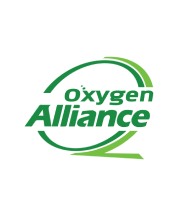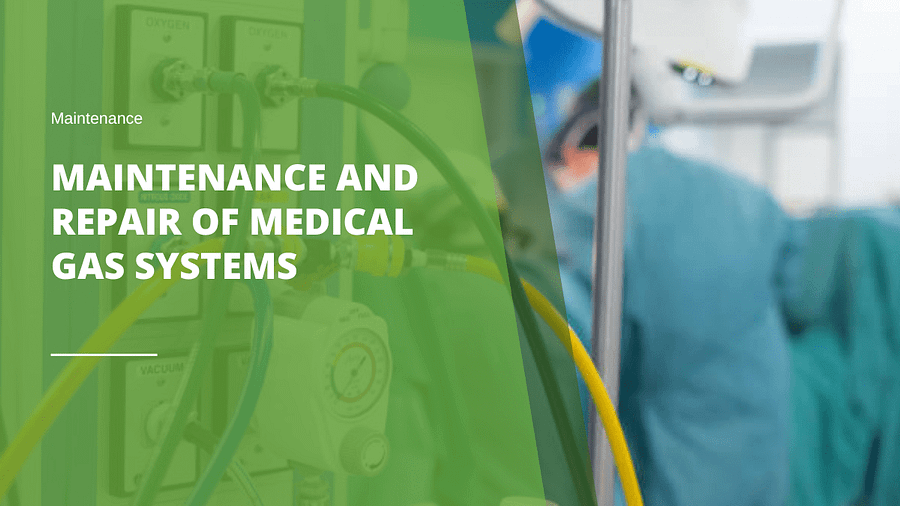Medical Gas Systems have paramount importance in life-saving facilities, including hospitals. These must be functioning properly around the clock for the continuous supply of crucial medical gases to the patients (1). Therefore, it is essential to maintain them from time to time, repair errors, and restore their function as soon as possible to avoid injuries and deaths.
Some of the main issues that require maintenance and repair are as follows:
- Continuous supply of gases:
Medical Gas Systems can not function if they run out of gas. Therefore, it is mandatory to keep multiple sources of gases other than primary sources, such as secondary and emergency sources. If the primary source runs out due to any damage, error, or repair process, other sources should be available to keep the system running (1,2). Other than the pipeline system, oxygen cylinders must be present to continue the oxygen supply to the patients if and when needed.
- Expansion consideration:
Patient inflow can never be truly known whenever a health facility is constructed. Therefore, with design and supply, one should always keep room for expansion so that an unexpected influx of patients can be handled successfully (1). These errors were noticed, especially during pandemic situations like COVID and emergencies like earthquakes, floods, and mass destructive events like bombs.
- Alarm systems:
It is of the utmost importance that alarm systems work around the clock. In case of a gas leak, fire eruption, or any other misfortune, these alarm systems should be accurate and fast to alert the managers about the fault in the system (3). Otherwise, it can lead to catastrophic events that can endanger the lives of thousands of people, including patients, healthcare staff, and workers.
- Mistakes due to improper color coding:
During the construction or repair of the pipelines, it is important to follow the color code and arrows so that there is no discrepancy in the gas in the pipes. This will ensure that terminal units are installed accordingly and that every gas is used for its correct purpose. There have been reports that such errors caused danger and near-death experiences in hospital settings (4). Therefore, special attention should be brought to this aspect during the maintenance of the Medical Gas Pipeline System.
- Quality of the gas:
Every gas is used for a specific purpose in the hospital. Apart from continued supply, maintaining the quality of gas according to standards should also be considered important. Several factors can affect gas quality, such as production, storage, pipelines, terminal units, etc. (5).
Any error within these components can lead to contamination or the intermixing of gases. Therefore, make sure it is produced in its pure form, stored at optimum pressure, released into pipelines at a specific rate, does not get contaminated in the pipelines, there is no leak, does not get mixed with another gas, and is then used properly with masks or nebulizers.
- Vacuum and gas scavenger system:
In the case of leaks or unused gas in the room, it is preferred to clear them out, as they may be hazardous to humans and may create a greenhouse effect (2). These must be installed in every hospital room, especially where gases are commonly used.
While maintenance and repair of Medical Gas Pipeline Systems is mandatory and should be done as soon as possible, it can cost millions and put lives in danger. Therefore, it is advisable to minimize the risk of errors beforehand during design and installation, as guided by guidelines such as Health Technical Memorandum 02-01 or National Fire Protection Association.
REFERENCES:
- Alassafi H, Al-Gahtani KS, Almohsen AS. Medical Gas Systems Maintainability Risks in Healthcare Facilities: A Design Optimization Approach. Sustainability. 2023 Jun 7;15(12):9204.
- Sarangi S, Babbar S, Taneja D. Safety of the medical gas pipeline system. Journal of anaesthesiology, clinical pharmacology. 2018 Jan;34(1):99.
- Highley D. Medical gases, their storage and delivery. Anaesthesia & Intensive Care Medicine. 2009 Nov 1;10(11):523-7.
- Kar AK. Gas pipeline error: Time to verify all the terminal central outlets?. Indian Journal of Anaesthesia. 2021 Feb 1;65(2):169-71.
- Malayaman SN, Mychaskiw II G, Berry JM, Ehrenwerth J. Medical gases: Storage and supply. InAnesthesia Equipment 2021 Jan 1 (pp. 3-24). WB Saunders.






